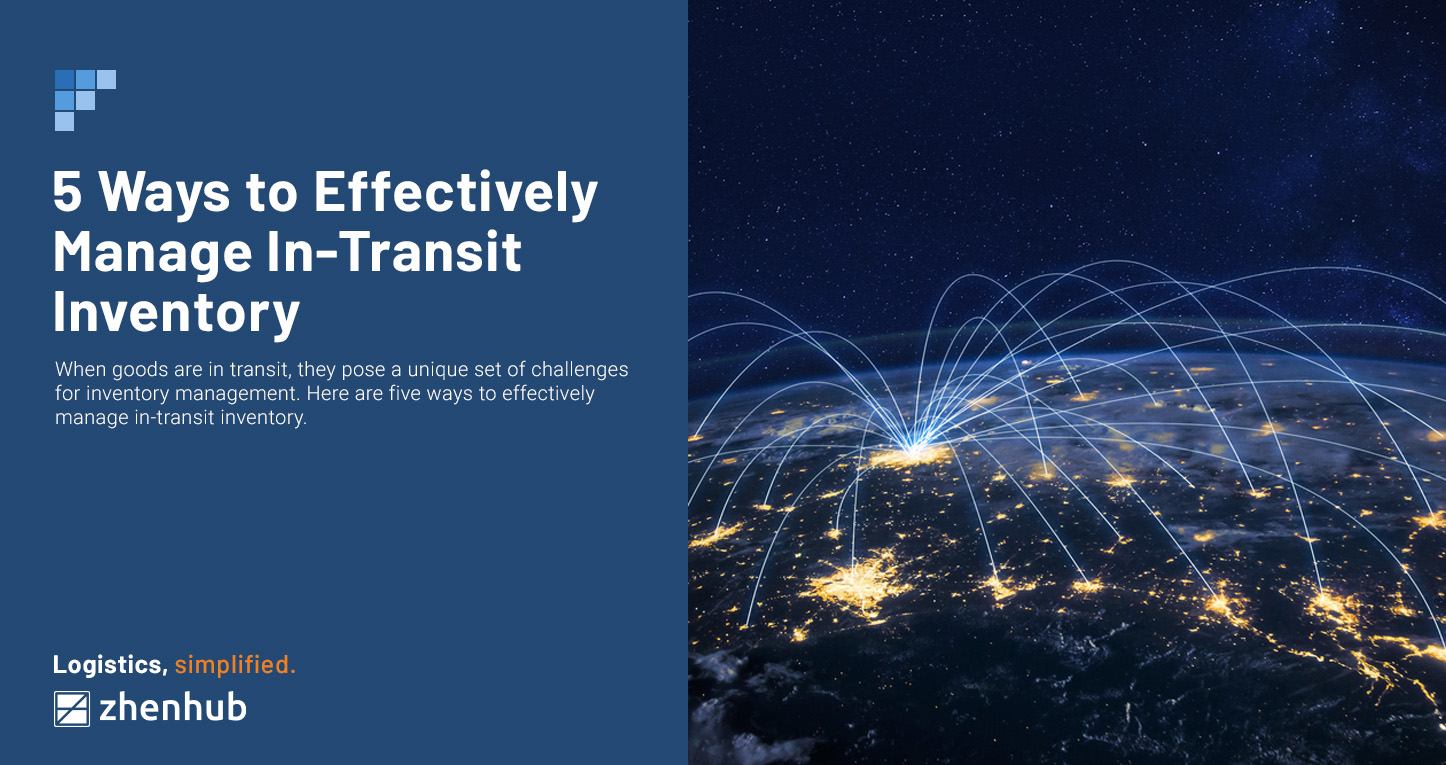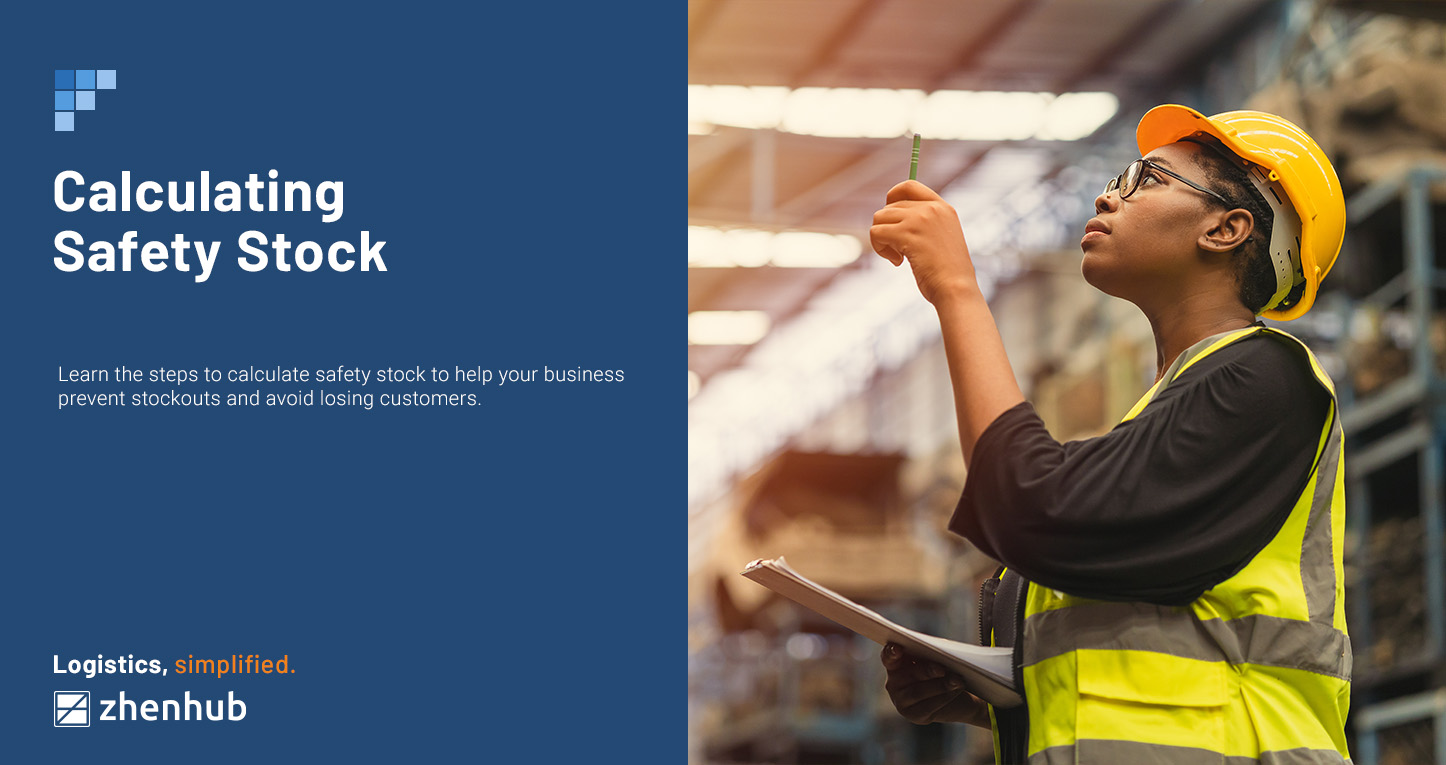
3 Ways to Effectively Manage In-Transit Inventory
Time to read: 5 minutes
More than 2 billion people purchased goods online in 2020. As more people depend on eCommerce, those numbers will have significantly increased. Today, inventory is one of the biggest challenges for online sellers. Companies need to keep track of what’s in stock and plan what’s coming in and going out.
Managing inventory is an essential aspect of running a successful eCommerce business. However, it can be tricky to keep track of moving goods, especially when dealing with multiple shipments from different suppliers.
In-transit inventory poses a unique challenge as companies must keep track of shipments as they move between warehouses and retailers via land, sea, and air. In this article, you will find out what is in-transit inventory and some best practices to help you manage your supply chain better.
In-Transit Inventory Defined
Inventory is any company’s most significant current asset. These assets must sell within the year. It can refer to physical goods, but it also includes services that have been provided before selling them. It would consist of all work done on premises at any given time.
There are several types of inventory, but we want to focus on “in-transit inventory.” It refers to items that are moving between parts of a supply chain. Examples include finished goods transported from the factory into a warehouse or a shipment moving from a warehouse to a retailer.
And any item that hasn’t reached the buyer is still considered part of a shipper’s inventory.
Inventory ownership officially changes for shipped items in transit when a confirmed buyer and transaction are confirmed. This change of hands happens during any of the following:
- Freight-on-board (FOB) shipping point
When a product is bought online, buyers can finalize the sale as soon as the shipping carrier takes it. The buyers assume responsibility for products purchased before being transported to their destination country or state-side. They may take on additional liabilities incurred from transporting goods like damages during transport and other issues. Buyers can expect to see Cost, Insurance, and Freight (CIF) on their invoices. This agreement sees to it that the seller shoulders transportation fees. It also includes insurance and other accessorial fees, until the cargo gets transferred to the buyer.
Some businesses use this to indicate that something is available for purchase when shipped out. But while the item is in transit, you cannot account for it on your system or present it to a buyer.
- Freight-on-board destination
The title of ownership for any shipped goods is transferred at the buyer’s loading dock, post office box, or office building. Once delivered to this destination location, it will be the seller’s responsibility. They can only take physical possession of it once the buyer signs it for delivery. This written acknowledgment indicates intent to transfer the said item from the seller’s name onto their customers.
Take note that Freight-on-board, also called Free on Board, is an international commercial law term published by the International Chamber of Commerce (ICC).
The contract of the sale will usually determine which of the two will apply during the items’ shipping out. Numerous costs are involved with freight-on-board, with multiple transportation fees for loading, unloading, and transfers between ports. In addition, buyers will usually have to pay for insurance to protect goods in transit.
Most purchases get classified under FOB shipping points for a small eCommerce business. It’s best to evaluate your company’s insurance plan, especially if you’re working with a third-party logistics (3PL) provider. Transit and inventory coverage will help cover any losses in the event of damage and lost inventory.
The Cost and Accounting of In-Transit Inventory
Goods in-transit inventory can take up a considerable chunk of your cash flow which usually waits on a boat or plane. In addition, it costs money to store and ship these items out, on top of what you paid for them.
Keeping track of how much in-transit inventory is costing your business is simple with these formulas. Get familiar with the average cost of transportation and the carrying cost of your logistics supplier.
You’ll also need to determine your average shipment value per day. You can get this with the following formula.
Merchandise Cost x Carrying Cost Percentage / 365 = Average Shipment Value Per Day
As an example, let’s assume your average inventory shipment is about $10,000. These goods take around 30 days to reach their final destination. Since you work with a reliable 3PL partner, the cost to store these items is 15% of the merchandise cost.
$10,000 x 0.15% / 365 = $4.11/day
With this daily shipment value, we can then determine the average cost of transportation per shipment:
Average Shipment Value Per Day x Number of Days of Transit = Cost of Transportation
$4.11 x 30 = $123.29
Finally, add the cost of transportation to your average inventory shipment to arrive at the final cost of goods in transit. Following our example above, this would amount to $10,213.29.
eCommerce businesses need to understand the “hidden cost” of having in-transit inventory, which is potential income stuck sitting in a boat for weeks or months. It’s an FOB shipping point concern, as the sellers take liability for the items while en route to their next destination. A stagnating cash flow can be a significant roadblock for many smaller businesses that need liquidity to run their day-to-day operations. What’s more, if the packages carrying your inventory get damaged, that may lead to lost income and added expenses for reimbursement and recovery.
The more accurate your inventory calculations, the better informed you will be about how much cash is tied up in overheads like transportation and carrying costs. And with long lead times, it’s crucial for businesses to accurately reflect this on their balance sheets so they can see what lies ahead—and make intelligent decisions based on real-time data rather than guesswork or outdated numbers that may not represent reality,
Effectively Managing In-Transit Inventory
Shipping out lots of items at once and waiting for the transactions to be finalized so you can receive payment can get complicated quickly and prove cumbersome.
Simplifying your supply chain to decrease the number of stops in your distribution line can lower overall holding and shipping costs and expedite delivery times for your customers.
- Avail of In-Transit Inventory Insurance
Anything can happen to inventory when it is out for delivery. Slowdown, shipping damage, and mishandling of goods can lead to delays and a negative customer experience. Getting insurance should be part of your contingency plan to help protect your goods, even if the buyer has already paid for it.
Most insurance claims cover theft, natural disasters, and accidental damage to your packages and the shipping carrier, such as a boat or train. Depending on the sale contract, the owner of the in-transit package should avail of the appropriate insurance.
Read through every contracts’ fine print so you know how to cover all the bases and keep your products safe in the event of damage. Then, work with an insurance provider specializing in logistics and shipping to get specialized packages that suit your operation.
- Direct-to-Consumer (DTC) eCommerce
DTC eCommerce allows you to bypass intermediaries and save on costly shipping and transportation fees. In addition, this business model is great for working in different markets, as you no longer have to ship out from your country of origin. Instead, you can source items in the region of your choice and have them directly shipped to customers.
Your inventory will also spend less time in transit by taking wholesalers and retailers out of the supply chain equation. Additionally, expect lower costs due to fewer stops and a reduced package damage risk. Of course, DTC eCommerce also has other great benefits, such as better communication with your customers and the opportunity to craft a unique shopping experience that generates positive brand loyalty.
- Digital Warehousing and 3PLs
Pushing your fulfillment and warehousing to a 3PL can help streamline your eCommerce operation. Digital warehouses utilize technology and software that track your inventory.
Warehouse management software connecting to your eCommerce platform also provides complete visibility into your inventory activity, order fulfillment, and shipping performance. Outsourcing your logistics frees you from time-consuming tasks and provides essential data to help you manage inventory. In addition, trends are easier to track when you have complete inventory activity records and access to predictive artificial intelligence (AI). Finally, relying on the expertise of a 3PL firm lets you strategically allocate resources and goods across fulfillment centers.
Modern problems require modern solutions, and choosing to go digital with your logistics management helps optimize your operations, improve delivery times, and save on freight costs.
Make the most out of your in-transit inventory with ZhenHub. We offer reliable and cost-efficient shipping services that you can track. Sign-up today and get access to our comprehensive logistics solutions software that can help your eCommerce business grow.


